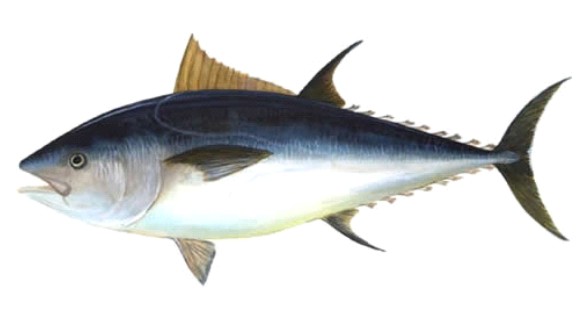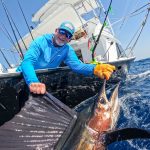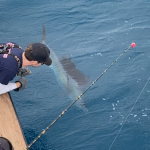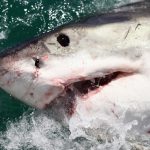Title/Subject:
Consultations on the Proposed Listing of Atlantic Bluefin Tuna as “Endangered” Under the Species at Risk Act (SARA)
Subject:
Atlantic Bluefin Tuna, SARA
Description:
Purpose: To obtain public comments on the potential impacts of listing the Atlantic Bluefin Tuna as “endangered” under the SARA.
Outcome: Public comments obtained will be used to help inform the SARA listing process for Atlantic Bluefin Tuna
Type of consultation activity:
Web posting, mail-out for feedback
Type of stakeholders:
Fishing Industry, Aboriginal Organizations, Stakeholders, General Public
Timeframe:
September 14 – December 14, 2012
Sector lead:
Ecosystems Management Branch (Species at Risk Program)
Partners:
N/A
Location:
Online, Newfoundland and Labrador
Consultation URL:
Proposed Listing of Aquatic Species Consultation Workbook for Atlantic Bluefin Tuna (Gulf of Mexico – Western Population)
Contact information:
Name: Species at Risk Program
Telephone number: 709-772-5384
Email: saranl-leptnl@dfo-mpo.gc.ca
Sector/Region: Ecosystems Management/Newfoundland and Labrador Region
Listing a Species under the Species at Risk Act
Overview of the Species at Risk Act
As part of the Government of Canada’s strategy for the protection of species at risk, the Species at Risk Act (SARA) was proclaimed in 2003. One of the purposes of SARA is to provide for the legal protection of wildlife species and the conservation of biological diversity. The Committee on the Status of Endangered Wildlife in Canada (COSEWIC) has the mandate to conduct assessments on the status of wildlife species and categorize them according to their level of risk for extinction (extinct, extirpated, endangered, threatened, or special concern). The Government of Canada considers the scientific evidence, the comments received from Canadians during listing consultations, and the potential socio-economic impacts before making a decision whether or not to include a species on the List of Wildlife Species at Risk under SARA. Recovery planning is undertaken for all listed species, and prohibitions are put in place protecting species listed as extirpated, endangered, or threatened from being harmed.
What is the purpose of the listing consultation workbook?
In 2011 COSEWIC assessed the Atlantic Bluefin Tuna as Endangered. This risk level indicates that the species is likely to become extinct or extirpated in parts of its range unless something is done to address the threats it is facing. The Government of Canada must now make a decision whether or not this species requires protection under SARA. One of the inputs into this decision is the results of consultations with stakeholders, Aboriginal organizations, Provincial governments, and the Canadian public. The purpose of this consultation workbook is to provide a mechanism to gather input about the potential economic, cultural and ecological impacts of listing or not listing this species under SARA, as well as the views and opinions of Canadians on this subject.
Atlantic Bluefin Tuna (Thunnus thynnus)
Description
Atlantic Bluefin Tuna is a very large marine fish species. The largest recorded individual, weighing 679 kg, was taken off Aulds Cove, Nova Scotia in 1979. This species has a stout but streamlined body with two dorsal fins; the first is yellow or bluish while the second is reddish-brown. On both the top and the bottom of the fish there is a series of small, yellowish finlets that run from the second dorsal fin and the anal fin to the tail. The back of this fish is dark blue to black, shading to lighter blue on the sides and silvery grey below.
Distribution
Atlantic Bluefin Tuna consist of at least 2 populations, one that spawns in the Gulf of Mexico (western population) and one or more that spawn in the Mediterranean Sea (eastern population). The eastern population ranges from northern Norway to the Canary Islands and into the Mediterranean and Black seas. In the western Atlantic, Bluefin Tuna range from Newfoundland to the Caribbean Sea and the coastal waters of Venezuela and Brazil. The vast majority of the fish found in Canadian waters are thought to originate in the Gulf of Mexico (western population) based on studies undertaken on fish captured in the directed tuna fishery in the Gulf of St. Lawrence and off the coast of Nova Scotia.
Atlantic Bluefin Tuna migrate seasonally into Canadian waters to feed, and are typically found off Atlantic Canada between July and December. They are found on the Scotian Shelf, in the Gulf of St. Lawrence, in the Bay of Fundy, and off Newfoundland. The occurrence and abundance of Atlantic Bluefin Tuna in any one of these locations varies considerably from one year to the next, possibly due to changes in the water conditions and availability of prey.
Life Stages
The western population of Atlantic Bluefin Tuna is known to spawn in the Gulf of Mexico; larvae and mature individuals have also been found in the Bahamas / Straits of Florida in suitable water temperatures at the time of spawning. There is uncertainty regarding the age at maturity in the western Atlantic, but it is believed to be in the range of 9 to 12 years. Humans, Killer Whales, and Mako Sharks are among the few predators on adult Atlantic Bluefin Tunas, but smaller juvenile tunas are vulnerable to other pelagic predators and seabirds.
Diet
Atlantic Bluefin Tuna are highly active predators that eat a large variety of fish, crustaceans, and cephalopods (squid and octopus). Important prey species for Bluefin Tuna in the western Atlantic include Herring, Mackerel and Capelin.
Habitat
Specific habitat requirements have not been defined for Atlantic Bluefin Tuna, but the species has proven to be the most flexible in its habitat use out of all of the tuna species in the Atlantic Ocean. This species can efficiently regulate its body temperature and therefore can tolerate a wide range of water temperatures, allowing it to spawn in the warm waters of the Gulf of Mexico and also to feed in the cool waters off Atlantic Canada. There are no known spawning or rearing habitats for this species in Canadian waters.
COSEWIC Assessment
Atlantic Bluefin Tuna was designated by COSEWIC as Endangered in May 2011. The rationale for this designation is as follows:
“This iconic fish has been heavily exploited for over 40 years and the current abundance of spawning individuals is the lowest observed. Fishing is the main threat to the viability of the species, and despite management efforts for the past 30 years to rebuild the population there is little sign of population increase. The abundance of spawning fish has declined by 69% over the past 2.7 generations. While the cause of the decline, overfishing, is understood, it has not ceased and is not clearly reversible. The spawning segment of the species was exposed to the Deepwater Horizon oil spill (2010) in a portion of its spawning area in the Gulf of Mexico. While the effects of the spill on the species are not currently known, it may represent an additional threat.”
While the COSEWIC assessment included information on both the western and eastern Atlantic populations, and there is believed to be some migration of Atlantic Bluefin Tuna between the western and eastern Atlantic, the vast majority of the Atlantic Bluefin Tuna in Canadian waters are believed to be from the western Atlantic population. Therefore this workbook will cover the western Atlantic population, and focus on the portion of this population in Atlantic Canadian waters.
Sources:
- Cover picture credit: United States National Oceanic and Atmospheric Administration
- COSEWIC. COSEWIC assessment and status report on the Atlantic Bluefin Tuna Thynnus thynnus in Canada. Committee on the Status of Endangered Wildife in Canada. Ottawa.ix + 30 pp. (http://www.sararegistry.gc.ca/document/default_e.cfm?documentID=2286).
Threats to Atlantic Bluefin Tuna
The following is a summary of threats to Atlantic Bluefin Tuna as identified by COSEWIC and by Fisheries and Oceans Canada (DFO) in the 2011 Recovery Potential Assessment (Canadian Science Advisory Secretariat Science Advisory Report 2011/056) for the species:
- Overfishing: COSEWIC identified historical and present-day overfishing as the single largest threat to the western population of Atlantic Bluefin Tuna. COSEWIC stated that, although the fishery in the western Atlantic is relatively well regulated, Atlantic Bluefin Tuna from the western population are known to migrate into the eastern Atlantic where they are susceptible to fleets targeting both the western and eastern populaitons. In addition, the COSEWIC report identified a concern with the continuing high levels of immature fish being captured in the western Atlantic fishery, and the potential negative impact this could have on recovery of the species.
- Underwater noise: Although overfishing is the only documented source of human-induced mortality in Canadian waters, noise caused by humans, such as underwater explosions, naval sonar operations, shipping and oil and gas exploration and exploitation, has been identified as a potential threat to Atlantic Bluefin Tuna due to impacts it may have on the behavior and physiology of the species and its prey.
- Threats to Habitat: The spawning and rearing grounds for the western population were exposed to the April 2010 Deepwater Horizon oil spill in the Gulf of Mexico. The nature and extent of the potential impacts of this event are not known at this time. Atlantic Bluefin Tuna migrate into Canadian waters to feed. Their prey is considered an important part of their habitat, therefore overfishing of their prey species is considered a potential threat. Climate change has also been identified as a potential threat to Atlantic Bluefin Tuna habitat.
Current Management Measures
Current Management
Currently, Atlantic Bluefin Tuna fisheries are managed by the International Commission for the Conservation of Atlantic Tunas (ICCAT), of which Canada is one of 48 Contracting Parties. ICCAT is responsible for determining the Total Allowable Catch (TAC) and assigning quotas to the Contracting Parties. DFO is responsible for managing Canada’s quota. The 2011-12 TAC for Atlantic Bluefin Tuna is 1750 t, and the Canadian portion of this quota is set at 483.16 t.
The terms of the Canadian fishery are outlined in the Atlantic Bluefin Tuna Integrated Fisheries Management Plan (IFMP) and the Canadian Atlantic Swordfish and Other Tunas Integrated Fisheries Management Plan. These terms include the allocation of Canada’s quota within the directed inshore Atlantic Bluefin Tuna fleet, as well as for the swordfish and other tunas pelagic longline fleet. Mortality of Atlantic Bluefin Tuna in regional charity tuna tournaments and the recreational fishery is also included in this quota, as is any tuna used for scientific research. The IFMPs also include management measures such as gear restrictions and closed areas.
Fleets participating in the Atlantic Bluefin Tuna fishery must carry a fisheries observer on a percentage of their fishing trips. This observer monitors the catch and by-catch within the fishery. The current target for observer coverage in most fleets that capture Atlantic Bluefin Tuna is 5-10% of trips.
In Canadian waters any Atlantic Bluefin Tuna that is landed is tagged with a unique number and a catch document is completed for each fish. This document follows the fish until the final point of sale.
Potential Management Measures
Potential Management Measures if Listed under SARA
If the Atlantic Bluefin Tuna is added to the List of Wildlife Species at Risk as an Endangered species, it will be legally protected under SARA and subject to prohibitions. It will be illegal to kill, harm, harass, capture, or take an Atlantic Bluefin Tuna or to possess, buy, sell, or trade any part of one. It will also be illegal to destroy any habitat deemed critical to the species’ survival and recovery. No commercial or recreational fisher would be allowed to retain this species in Canadian waters. Permits would have to be issued under SARA for any activity that could potentially harm Atlantic Bluefin Tuna, including by-catch and scientfic research.
If Atlantic Bluefin Tuna is listed under SARA, DFO will use the best available information to develop a Recovery Strategy and Action Plan for the species, in collaboration and consultation with stakeholders and partners. Canada will also continue to play an active role in ICCAT to ensure that a sustainable fishing strategy is implemented Canada-wide.
Potential Management Measures if Not Listed under SARA
If this species is not listed under SARA, DFO will continue to manage the Atlantic Bluefin Tuna fishery under the existing Integrated Fisheries Management Plan for this species, using the Total Allowable Catch assigned to Canada by ICCAT, and in accordance with the roles and responsibilities outlined in the Fisheries Act, using credible, science-based, affordable and effective practices. DFO will aim to produce a new Integrated Fisheries Management Plan for Atlantic Bluefin Tuna in 2012. Components of this new plan could include a review of at-sea observer coverage in fisheries with a directed or incidental capture of Atlantic Bluefin Tuna to ensure that observer coverage is sufficient to monitor the fishery. In addition, a review of existing monitoring documents could be undertaken, and amendments made to improve data collection on discarded Atlantic Bluefin Tuna.
For questions or comments concerning the Species at Risk Act or concerning this consultation process, please visit www.sararegistry.gc.ca.
This article re-posted from Fisheries & Oceans Canada:
Please click HERE for original link to Consultation Calendar – DFO Newfoundland and Labrador Region






